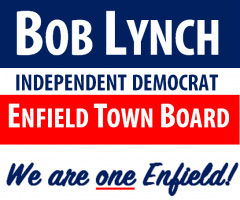Town Board hustles toward first-ever Flood Law as deadline looms
by Councilperson Robert Lynch; February 10, 2025
The common phrase is “Hurry up and wait.” But in Enfield’s case, as it addresses a new state agency mandate, it’s best to flip that adage around: “First wait, but then please hurry up.”
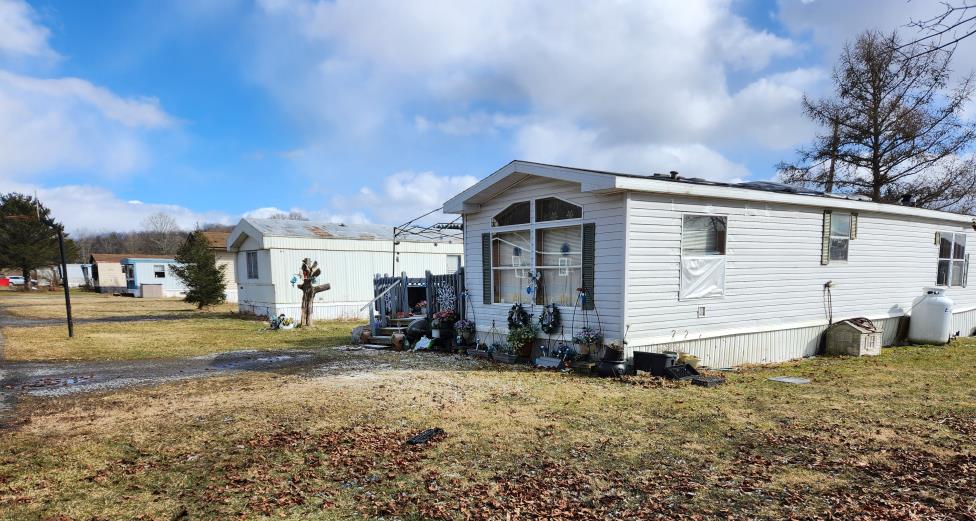
For the first time in its history, outsiders have found that the Town of Enfield is a place where floods may happen.
Preliminary mapping, published by the Federal Emergency Management Agency (FEMA) just over a year ago, has identified small slivers of livable land along Enfield Creek—and only along Enfield Creek—as lying in a newly-designated flood plain. They’re locations where floods might occur maybe only once in 100 years. Quite simply, FEMA had never bothered to look at Enfield before now.
A week before Christmas, FEMA finally made its flood maps final.
Whenever a flood plain is found, FEMA will refuse to let a town like Enfield join the National Flood Insurance Program (NFIP) unless it first writes regulations to limit property-owner risks in identified flood plains. And unless and until Enfield joins the NFIP, resident homeowners cannot buy federally-backed flood insurance. And for those living in the flood zone, unless they buy flood insurance, bankers will not lend money or keep existing federally-backed mortgages valid, FEMA staff advised the Enfield Town Board last year.
Moreover, New York State rules take it one nanny-state step further. Department of Environmental Conservation (DEC) regulations require Enfield to become an NFIP participant—and impose the land use controls—whether or not the town wants homeowner access to the insurance program.
FEMA’s Thomas Song and the New York Department of Environmental Conservation’s Brienna Wirley made their case to the Enfield Town Board at its meeting in February 2024. They instructed Enfield to write its first-ever Flood Damage Prevention Law by a then-unspecified future deadline. Ours would be a local ordinance defining what can and cannot be built in Enfield’s tiny bit of a flood plain. Yes, to the few who may own land there, it looks a lot like zoning.
“It probably behooves us to get working on at least through the Planning Board process and through the Town, whatever we have to do to become an NFIP member, sooner rather than after the thing is adopted because no doubt it will be adopted,” this writer, Councilperson Robert Lynch, told Thomas Song and the DEC’s Wirley as they Zoomed into last February’s meeting.
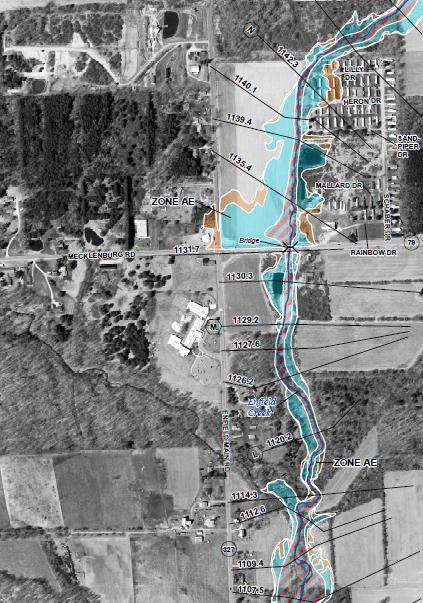
“Is there a reason that we have to wait for the adoption to move forward?” Town Supervisor Stephanie Redmond asked.
“So you don’t have to if you want to work through that process, but you would have to then go through a revision to your ordinance at the time that the maps are finalized,” Wirley cautioned the Town Board that night. “So if you were to adopt an ordinance now, you would be adopting it based on preliminary maps which would then have to be revised at the time that the maps are finalized….”
So Enfield waited. That was then. This is now.
On January 13th of this year, Brad Wenskoski, Environmental Program Specialist with the DEC, advised Enfield that the maps are now final, that the clock is now ticking, and that Enfield must submit a draft “floodplain management ordinance” for its agency’s review by March 20th; in other words, little more than two months later. Supervisor Redmond forwarded Wenskoski’s instructions to the Town Board on February 5th. The matter was placed on the Town Board’s agenda for its monthly meeting, February 12.
Given the suddenly-sprung mid-March deadline, the Town Board has only its February and March meetings to cobble something together. Statutes constructed in haste too often mature into bad law.
“You don’t know how angry FEMA’s suddenly-imposed deadlines have made me,” this Councilperson replied to the Supervisor and to fellow Councilpersons the day the DEC official’s instructions were forwarded. “And I am not prepared to push some new regulation through our town’s government just to satisfy them.”
“We have procedures in Enfield,” this Councilperson, Lynch, continued. “Any model local law should first face review by our Planning Board, and then by the Town Board. If that remains proper procedure, then the Planning Board should review these documents as soon as tonight. If not, we should take our time, miss the FEMA/DEC-set deadline, and do this right.”
This writer copied Planning Board members with his reply. And a wise move that was. The Town Planning Board was set to meet that night. And after about three-quarters of an hour of fast-paced review, the Planning Board, by consensus, endorsed a 20-page draft law that the DEC had presented to us. Planners added a few additional provisions of their own, and forwarded their work product to the Town Board. First step accomplished.
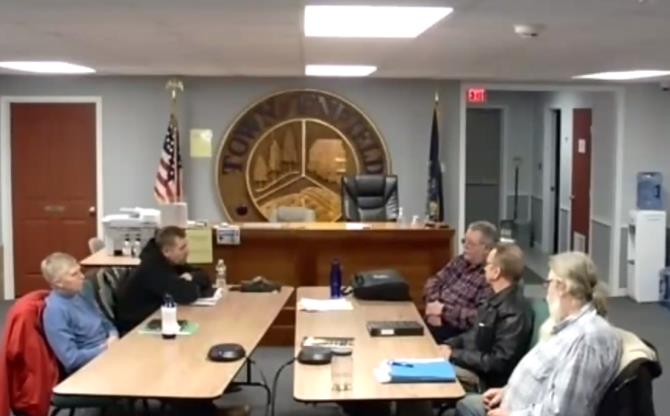
In satisfying state and federal deadlines, Enfield holds a disadvantage. Every other town in Tompkins County has before stood where we stand for the first time. They’ve had flood zones identified previously and been under federal or state mandates to write flood laws. Their flood rules will need tweaking, to be sure. But unlike Enfield, places like Ithaca won’t need to start from scratch. Enfield does.
The only reason Enfield finds itself not in total befuddlement is because the DEC forwarded it a multi-page local law template that the town has used as a starting point. So far, the Planning Board, by necessity, has clung quite tightly to the DEC model law. And of five recommended add-on’s to the draft document that DEC provided—provisions that would toughen flood plain protections beyond the bare minimum—the Planning Board endorsed four of them. The only option the Planning Board did not add involved levees or “high hazard dams,” of which Enfield, quite frankly, has none.
While the recommended restrictions may trample upon liberty to some, Enfield enjoys the luxury of geographic restriction. Unlike the City of Ithaca, in which wide swaths of the municipality were newly-placed at flood risk, the Enfield Creek lowlands that FEMA maps now designate—and in which the new rules would regulate development—remain quite tiny.
Town officials last year placed only about 20-25 residences in the preliminary (now final) Enfield flood plain. Many of them are modular homes quartered at the Sandy Creek mobile home park. They stand at a point where the nearby creek babbles with little more ferocity than would a farmer’s ditch.
The Enfield Planning Board lacked time to review the DEC’s draft flood law at its leisure. But Wednesday, February 5th planners exercised their best-attempted due diligence to scrutinize its provisions and pass along something meaningful to the Town Board. Reflective of their haste, they never bothered to take a formal vote.
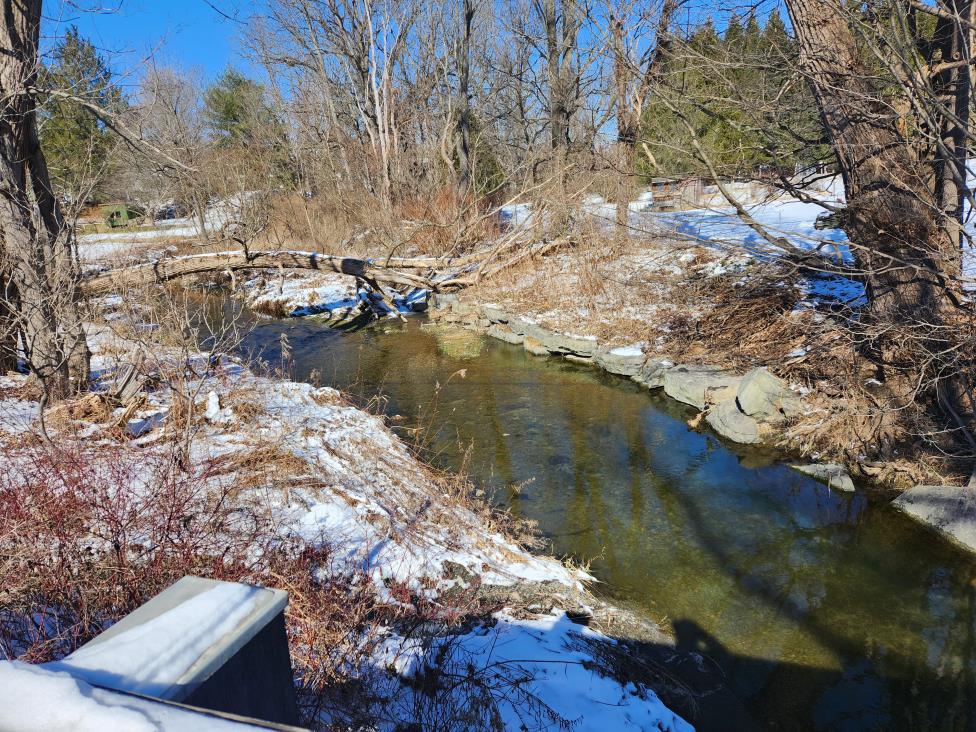
“I think we need the law,” Board Chairman Dan Walker told planners. “It will protect the town residents,” Walker concluded. “I’m comfortable with it.”
“What do we have to do, and what do we want to do?” Planning Board member Mike Carpenter asked. What Carpenter learned is that what the DEC had drafted constitutes the bare minimum regulation. On at least one key point, planners reached beyond the minimum.
The state agency flood rules require the first floor of any new residence in a flood plain be raised to the height that waters might rise in a so-called “100-year flood” plus two feet more.
“Pilings, columns (posts and piers), or shear walls parallel to the flow of the water” could be employed to hold the new flood-prone residence up, the DEC draft says. The Planning Board did not dwell on it, but Walker said that building a house on stilts didn’t sound like a very good idea; presumably not safe. The Town’s current draft would ban homebuilding in flood plains altogether.
Similarly, with manufactured homes, state rules allow them to be placed within a flood plain so long as they’re elevated and anchored. The Enfield draft with prohibit new mobile home placements, altogether, but allow improvements that increase that home’s value more than 50 per cent, providing the owner follows the state rules.
“For some who don’t know what they’re doing, this is a good thing,” Planning Board member Rich Teeter remarked of the regulations.
Some communities join to enforce flood regulations intermunicipally. Enfield will likely assign policing to Code Enforcement Officer Alan Teeter. To anyone’s best knowledge, Tompkins County lacks any kind of Code Enforcement Office that could coordinate the work.
“I think we should keep in local anyway,” Carpenter told colleagues.
“The only cost the town would have would be administration and enforcement,” Chairman Walker observed.
“Does he get paid extra for it?” Carpenter asked, pointing Alan Teeter’s way. The code officer shook his head in doubt. Teeter’s pay is set by the Town Board.
Walker claimed some Enfield residents have already begun asking about flood insurance. But he cautioned, “It’s not cheap.”
A DEC representative on a conference call the next day insisted that a flood insurer cannot deny coverage to a homeowner once the rules are in place, even if the insured location stands likely to flood. Yet one Planning Board member remarked he’d already been turned down for flood insurance to cover a cottage he owns along Seneca Lake.
In Enfield, creeks tumble through narrow gullies and ravines. And that presents risks the FEMA flood mappers never bothered to consider when they surveyed the town with a broad brush in 2017. That piqued Mike Carpenter’s curiosity.
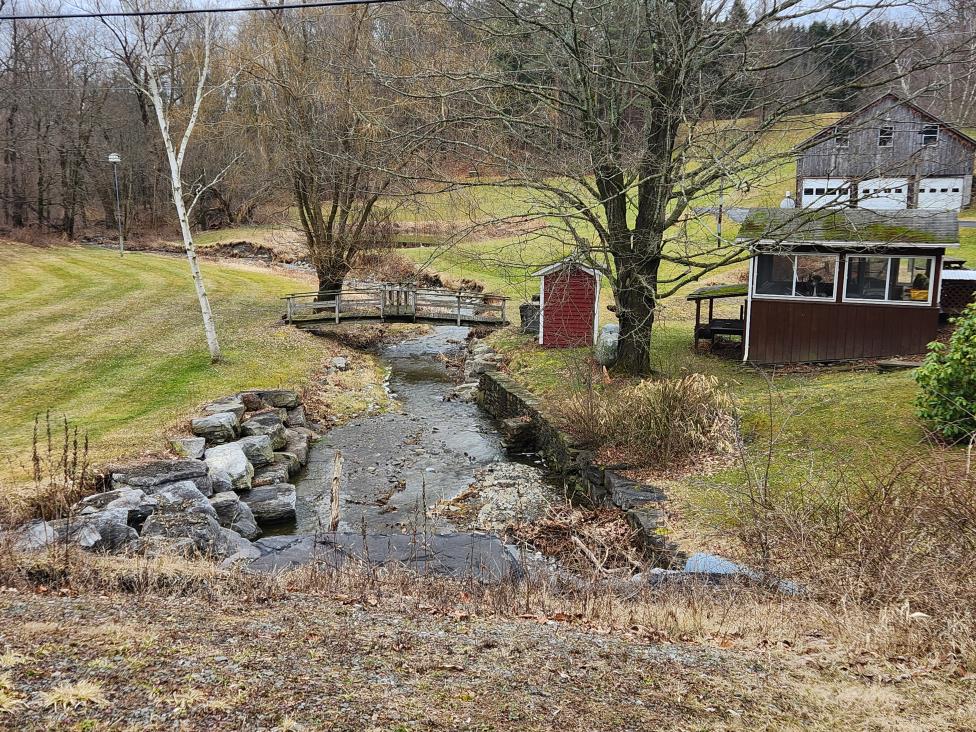
“Is there liability for the Town if we do it?” Carpenter asked concerning the regulations. ”What if someone gets flooded out in a place that the maps didn’t identify? If you don’t say anything, it’s a lot easier to not get in trouble than if you say something.”
Carpenter may gain comfort to know that a “Disclaimer of Liability” in the draft law offered by DEC officials qualifies that the “local law shall not create liability” on the part of Enfield “for any flood damages that result from reliance” on it, and that the law “does not imply that land outside the area of special flood hazards or uses permitted within such areas will be free from flooding or flood damages.”
Of course, trial lawyers are paid handsomely to circumvent disclaimers like that. Then, again, nothing in the law prevents the fearful homeowner from buying insurance regardless of his exclusion.
“This law is a living document,” the draft Enfield document states at its close, a home-grown addition this Councilperson proposed to acknowledge the limited reach of the protections accorded by what’ll be placed on the Town Board’s table this week.
“And it remains the intent of the Town of Enfield through its Town Board to amend this local law for Flood Damage Prevention from time to time as the community’s knowledge of potential flood risk expands and as the community identifies additional areas of the Town that either by experience or expectation deserves protection by the cloak of these regulations,” that closing addendum states.
****
Enfield has floods, and not always in the places that FEMA and DEC think it does. But bureaucrats compartmentalize, often arbitrarily. Rules are rules, and deadlines are deadlines.
State conservation officials demand a draft law by March 20. Enfield must provide it. A Public Hearing will likely come later, sometime in the spring. DEC wants the law adopted by May 19th. Its drop-dead implementation date comes one month later.
I know, why they couldn’t have told us this a year ago? As it’s said, statutes constructed in haste….
###
